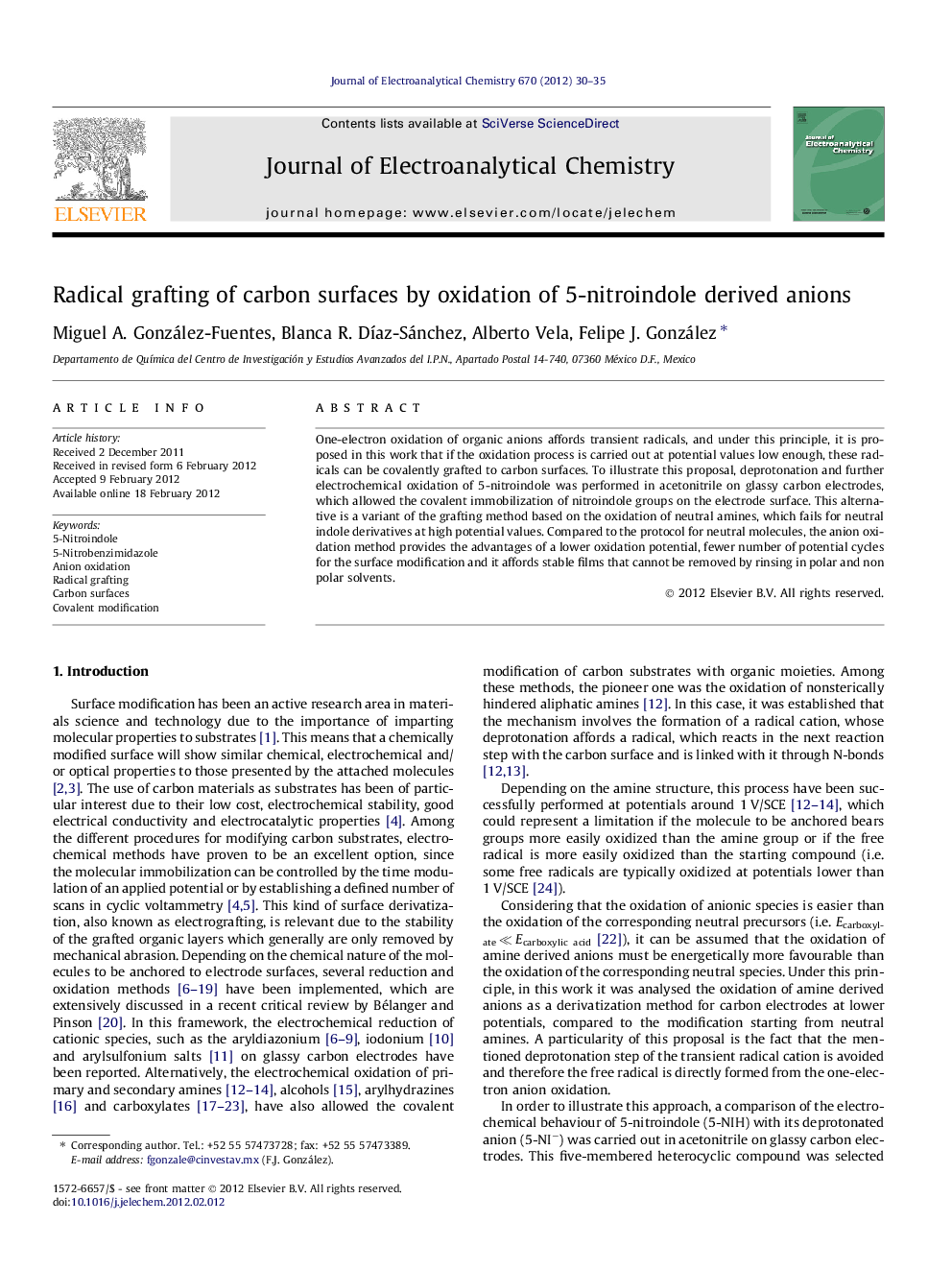| Article ID | Journal | Published Year | Pages | File Type |
|---|---|---|---|---|
| 219332 | Journal of Electroanalytical Chemistry | 2012 | 6 Pages |
One-electron oxidation of organic anions affords transient radicals, and under this principle, it is proposed in this work that if the oxidation process is carried out at potential values low enough, these radicals can be covalently grafted to carbon surfaces. To illustrate this proposal, deprotonation and further electrochemical oxidation of 5-nitroindole was performed in acetonitrile on glassy carbon electrodes, which allowed the covalent immobilization of nitroindole groups on the electrode surface. This alternative is a variant of the grafting method based on the oxidation of neutral amines, which fails for neutral indole derivatives at high potential values. Compared to the protocol for neutral molecules, the anion oxidation method provides the advantages of a lower oxidation potential, fewer number of potential cycles for the surface modification and it affords stable films that cannot be removed by rinsing in polar and non polar solvents.
Graphical abstractFigure optionsDownload full-size imageDownload as PowerPoint slideHighlights► Method for covalent modification of carbon surfaces based on the oxidation of organic anions. ► Low potential oxidation of amine derived anions and grafting of carbon surfaces. ► Covalent modification of carbon surfaces with nitroindole groups. ► Covalently adsorbed nitroaromatic groups on glassy carbon and HOPG electrodes.
